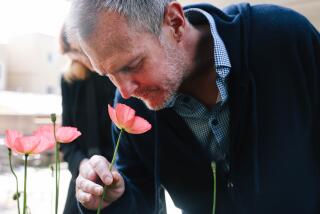Missouri Museum Favors Macabre : Psychiatry: Archivist has assembled a grim historical collection on mental illness.
- Share via
ST. JOSEPH, Mo. — A bulldozer kicks up dust at the site of a new, state-of-the-art psychiatric hospital, while across the street George Glore reverently preserves the gruesome history of mental illness treatment.
For more than a quarter-century, Glore, curator of the psychiatric museum at St. Joseph State Hospital, has been working on what’s become one of the country’s leading collections of devices used in treating mental illness.
“There are times when I’ve thought, ‘Do we really need a museum?’ ” Glore said. “My personal feeling is we certainly need to preserve history and tell about it because he have to remember the past. We really can’t have a good appreciation of the strides we’ve made if we don’t look at the atrocities of the past.”
The Glore Psychiatric Museum, named for the 38-year employee of Missouri’s mental health system, is both a classroom and a chamber of horrors.
Mannequins dressed in period clothing are locked in coffinlike iron cages, chained to walls and burned at the stake to demonstrate how the mentally ill once were handled. Dolls in dioramas are being bound and beaten or undergoing bloodlettings.
Relics come from the state hospital itself, formerly known as the State Lunatic Asylum or the State Insane Asylum No. 2. Pills stuck to a card and labeled “modern tranquilizers” are juxtaposed with “early tranquilizers”--folded leather belts wrapped with white tape once used to club patients.
There’s an iron ring that came from the hospital’s basement wall where patients used to be chained. There’s a screened metal door from an old seclusion room. Sinister-looking polished lobotomy instruments hang on a wall in the same room where machinery for early shock treatments is displayed.
Glore says the museum affects people differently.
“Some people are open to the concept and feel, as I do, that it’s a good educational experience,” he said. “There are others who have become almost sick.”
Glore, who says the museum attracts about 10,000 visitors yearly, believes the museum is unsuitable for children younger than 12. But Mary Ann Krattli of Overland Park, Kan., says she had a long discussion with her two sons before taking them.
“I wanted my kids to know how far we’ve come, and how cruelly we used to treat people,” she said.
Bob, 12, says he almost got sick looking at some of the displays. Mike, 10, somberly says the museum showed how people used to treat the mentally ill was “all wrong.”
Within two years, St. Joseph State Hospital, one of four state-run psychiatric hospitals, will become the Northwest Missouri Psychiatric Rehabilitation Center when it relocates in this northwest Missouri town. The new hospital will cost $15 million.
Bob Bax, spokesman for the Missouri Mental Health Department, says that besides high maintenance and utility costs in the current 19th-Century structure, some modern treatment methods are impossible there. New facilities will include cottages for some patients, large common areas and more privacy, including private bathrooms.
“There was a time when care for people with mental illness was an asylum setting,” Bax said. “There’s been a big change from what original hospitals were intended to do.”
Besides the horrific instruments and devices now displayed in the museum, there are reminders of early patients. For example, a glass-covered exhibit shows the stomach contents of a compulsive woman who had swallowed 1,446 items before falling ill in 1929. She died as surgeons were removing buttons, screws, spoon handles and thimbles from her body.
There also is elaborate wickerlike furniture made by patients from hand-twisted paper in the 1920s, and tools used at the hospital’s former dairy, baking and other industries.
Modern displays include patients’ paintings and pottery, the kind of exhibits Glore wants to expand.
“There’s a tendency to zero in on the macabre, and I don’t think that’s fair,” he said.
William E. Baxter, director of library and archives for the American Psychiatric Assn., says people like to visit psychiatric hospitals out of curiosity.
“There is a fascination with the unknown, and mental illness is unknown to the vast majority of the population,” he said.
Glore, 56, saw some of the more primitive methods as a psychiatric hospital employee.
“When I started, it was really the dark ages,” said Glore, who began working at the age of 19 as an attendant at the state hospital in Farmington. “Patients were neglected. The patients didn’t know their rights. They didn’t have recourse.”
He moved to St. Joseph in 1962 as an activity aide in occupational therapy. There he saw the 300 “most difficult” female patients--including the mentally retarded, combative and elderly--kept in two huge rooms with just one bathroom each. Beds were jammed together, and many of the women who had no control over their bowels or bladders went naked, he says.
The “most difficult” men were held in similar conditions, but with fewer men per ward. While there were showers, sometimes the overworked staff would clean the men all at once with high-pressure hoses, Glore said.
The better wards were lined with rocking chairs, all facing toward the door. The “good” patients simply rocked their days away, he said.
“There were times I almost bailed out,” Glore said.
More to Read
Sign up for Essential California
The most important California stories and recommendations in your inbox every morning.
You may occasionally receive promotional content from the Los Angeles Times.













